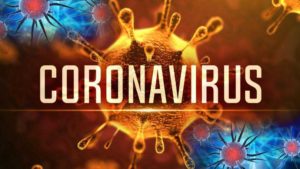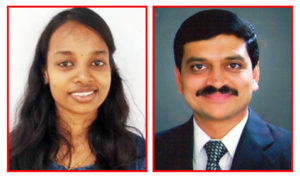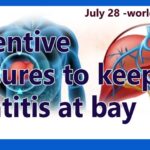

Outbreak of human corona virus:
Corona viruses vary significantly in risk factor. Some can kill more than 30% of those infected (such as MERS-COV), and some are relatively homeless, such as the common cold. Corona viruses causes cold with major symptoms, such as fever & sore throat from swollen adenoids occurring primarily in the winter and early spring seasons. Corona viruses can cause pneumonia (either direct viral pneumonia or a secondary bacterial pneumonia) and bronchitis (either direct viral bronchitis or a secondary bacterial bronchitis). The much publicized human corona virus discovered in 2003, SARS-COV which causes severe acute respiratory syndrome(SARS), has a unique pathogenesis because it causes both upper and lower respiratory infections.
Seven strains of human corona viruses are known, of which four produce the generally mild symptoms of the common cold:
1. Human corona virus OC43 (HCOV- OC43)
2. Human corona virus HKU1
3. Human corona virus NL63 (HCOV-NL63, new haven coronavirus)
4. Human corona virus 229E (HCOV-229E)
And three symptoms that are potentially severe:
1. Middle east respiratory syndrome- related corona virus (MERS-COV), previously known as novel corona virus 2012 and HCOV-EMC
2. Severe acute respiratory syndrome corona virus (SARS-COV or SARS-classic)
3. Severe acute respiratory syndrome corona virus-2 (SARS-COV-2), previously known as 2019-nCOV or novel corona virus 2019.
The corona virus HCOV-229E, NL63, OC43 & HKU1 continually circulate in the human population & cause respiratory infections in adults and children worldwide.
Transmission:
Human to human transmission of corona viruses is primarily thought to occur among close contacts via respiratory droplets generated by sneezing and coughing. The interaction of the corona virus spike protein with its complement host cell receptor is central in determining the tissue tropism, infectivity and species range of the virus. The SARS corona virus, for example, infects human cells by attaching to the angiotensin- converting enzyme 2 (ACE-2) receptor.
People are thought to be most contagious when they are most symptomatic or sickest. Even those without symptoms could spread virus. A person can get COVID-19 by touching a surface or object that has virus on it & then touching their own mouth, nose or eyes. Virus is supposedly heavier than usual viruses & can’t travel more than 6 feet or so in distance.
How COVID-19 affects the body ?


1. 2019 novel corona virus assault begins in the nose.
2. It invades epithelial (uppermost) cells of body’s respiratory tract.
3. It is best if viral infection can be controlled at this stage, as disease would be less severe – almost 85% cases fall in this category.
4. Phase I can last upto 3-4 days.
Phase II:
1. If virus moves down to windpipe and gets into respiratory tree and lung tissue, diseases can get more severe and lead to pneumonia.
2. Body’s immune system steps in and white blood cells ‘beat’ pathogens and help body heal.
3. But in case immune system is not strong enough, there could be large- scale destruction of not just virus- infected cells but even healthy ones.
4. Damage to epithelium lining of trachea and bronchi could result in loss of protective mucous producing cells as well as tiny hairs that sweep dirt and respirator secretions out of lungs.
5. Lungs become vulnerable to bacterial infection and may need mechanical ventilator support.
6. A bacterial infection would mean stem cells (in respiratory tract that repair damaged tissues) are destroyed.
7. Lungs are too impaired to work, starving vital oragns of O2.
Symptoms of COVID-19:
The COVID-19 virus affects different people in different ways. COVID-19 is a respiratory disease and most infected people will develop mild to moderate symptoms and recover without requiring special treatment. People who have underlying medical conditions and those over 60 years old have a higher risk of developing severe disease and death. Common symptoms include:
1. Fever
2. Tiredness
3. Dry cough
4. Shortness of breath
5. Aches and pains
6. Sore throat
7. And very few people will report diarrhea, nausea or a runny nose
People with mild symptoms who are otherwise healthy should self-isolate and contact their medical provider or COVID-19 information line for advice on testing & referral.
Dr.Nandhini V. Mohan & Dr Venkataramana Hegde
Veda wellness center
Nisarga Mane Sirsi
Uttarakannada District, Ph:9597019032/ 9448729434 Email : nisargamane6@gmail.com













